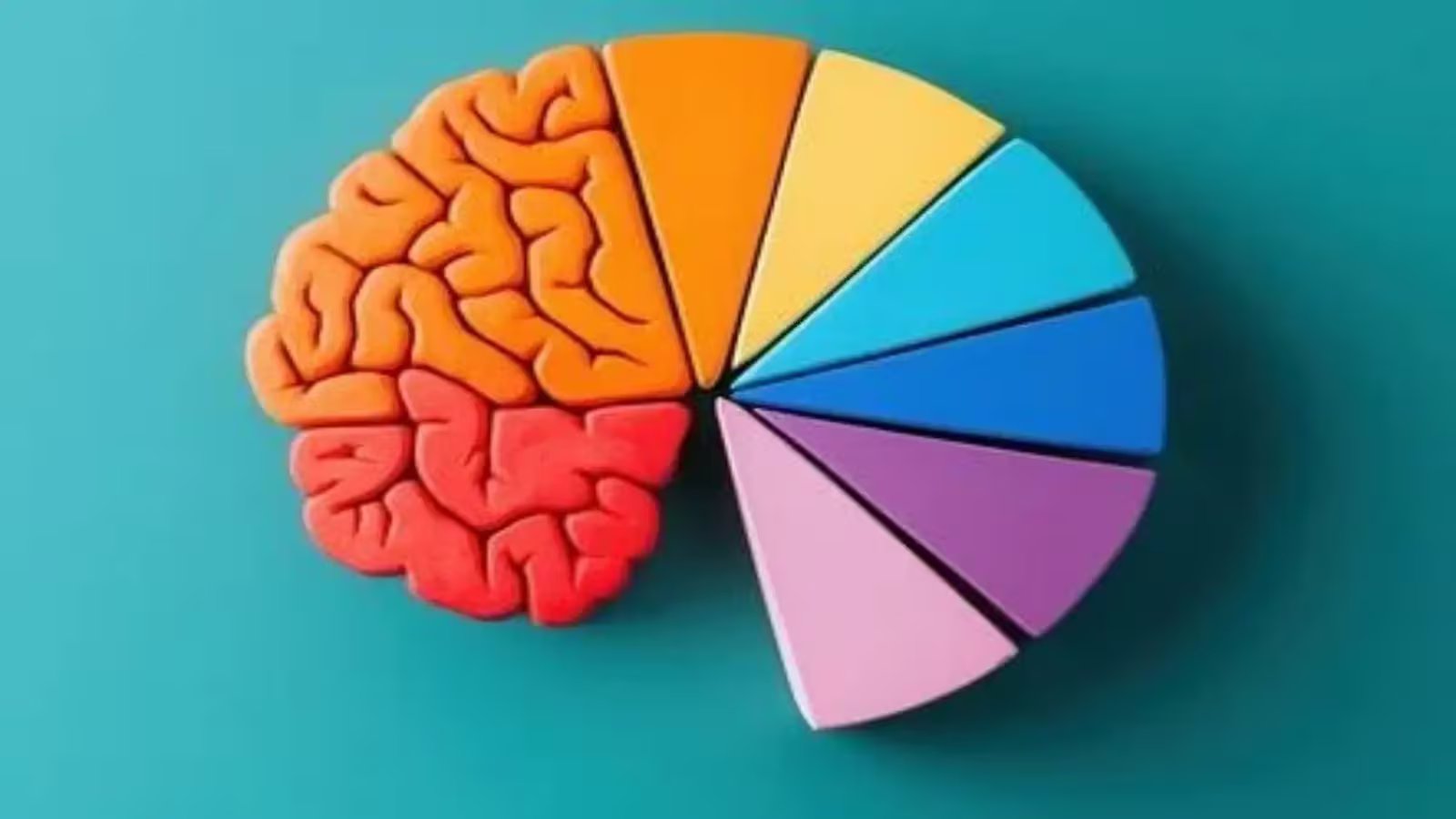عندما يُطلب منك تذكر شيء ما، هل تظهر صورة في ذهنك؟ ذكريات الكثير من الناس مرتبطة ارتباطًا وثيقًا باستخدامهم للصور الذهنية.
في دراسة قادمة في Clinical Psychological Science، فحص ريان يونغ، زميل ما بعد الدكتوراه في أكاديمية بايكريست للبحث والتعليم، هذه السمة لدى الأشخاص المصابين باضطراب ما بعد الصدمة (PTSD).
أظهرت دراسات سابقة أن استخدام الصور الذهنية يمكن أن يساعد الناس في الحفاظ على ذكرياتهم حية لفترة أطول (Anderson et al., 2017; Rasmussen & Berntsen, 2014). الفكرة شائعة جدًا لدرجة أن المشاركين في مسابقات الحفظ غالبًا ما يستخدمون التصور كتقنية لحفظ كميات كبيرة من المعلومات بسرعة.
ومع ذلك، في حالة مثل اضطراب ما بعد الصدمة، يمكن أن يكون التصور القوي ضارًا (Clark & Mackay, 2015; Holmes et al., 2015). قال يونغ إن الأفراد المصابين بهذا الاضطراب غالبًا ما يعانون من استرجاع ذكريات حية، حيث يشعر الشخص المصاب بالصدمة كما لو أنه يعود إلى سيناريو مرهق من خلال ذاكرة الحواس.
قال في مقابلة: “كان الأمر مفاجئًا حقًا أنه عندما نظرنا في [الأدبيات العلمية]، ربما وجدت نصف الدراسات التأثير، بينما لم تجده النصف الآخر”.

افترض يونغ وزملاؤه أن هذا التناقض قد يكون بسبب كيفية قياس الدراسات السابقة للتصور نفسه. لذلك، بالنسبة لدراستهم، حقق الفريق في سمتين مختلفتين للتصور: تصور الأشياء، الذي يتضمن تفاصيل مادية مثل الشكل واللون والمظهر؛ وتصور المكان، الذي يتضمن تفاصيل مثل الموقع والاتجاه والحركة.
لقياس تصور الأشياء لدى الشخص، قد يطلب الباحث من الشخص تخيل تفاحة في عقله، ثم يطلب منه وصف لونها وحجمها وشكلها. لقياس تصور المكان، قد يطلب الباحث من الشخص رسم خريطة لمساحة زارها.
تعرف على المزيد حول الذاكرة في هذا البودكاست: عقول صغيرة، استراتيجيات ذكية: كيف يقرر الأطفال متى يستخدمون أدوات الذاكرة الخارجية
اختبر يونغ وزملاؤه كيف ترتبط هاتان السمتان المختلفتان للتصور بأعراض اضطراب ما بعد الصدمة. في دراستين منفصلتين، تم إعطاء المشاركين سلسلة من الاستبيانات لقياس سمات تصور الأشياء والمكان. في المجمل، ضمت الدراستان 3,203 مشاركين، بعضهم قد تعرض لحدث صادم. في الدراسة الأولى، تراوحت أعمار المشاركين بين 18 و83 عامًا. في الدراسة الثانية، كان جميع المشاركين من طلاب الجامعة.
في كلا الدراستين، طُلب من المشاركين الإجابة على أسئلة حول أعراض اضطراب ما بعد الصدمة والاكتئاب والقلق وتصور الأشياء والمكان.
على سبيل المثال، قد تكون بعض عناصر الاستبيان المصممة لقياس تصور الأشobjects قد سألت المشاركين إذا كان من السهل عليهم إغلاق أعينهم وتخيل مشهد مروا به بسهولة (Blajenkova et al., 2006)، بينما قد يكون سؤال قياس تصور المكان قد سأل المشاركين إذا كان بإمكانهم تدوير أشكال هندسية ثلاثية الأبعاد في أذهانهم بسهولة.
أثناء تحليل هذه البيانات، ضبط الباحثون أعراض الاكتئاب والجنس، حيث وجدت أبحاث سابقة أنهما قد يؤثران على مثل هذه الدراسات (Holmes et al., 2016; Ji et al., 2019). بعد ضبط البيانات، وجدوا أن الأشخاص ذوي التصور القوي للأشياء كانوا أكثر عرضة للإصابة بأعراض شديدة لاضطراب ما بعد الصدمة مقارنة بالأشخاص ذوي التصور المكاني القوي.
قال يونغ: “لقد فوجئنا بالتأكيد، لأنه لا يوجد الكثير من الأبحاث حول هذا الموضوع، خاصة فيما يتعلق بالجانب المكاني”.
ليس من الواضح سبب أن التصور المكاني قد يكون أقل ارتباطًا بالأعراض السلبية لاضطراب ما بعد الصدمة مقارنة بتصور الأشياء. ومع ذلك، قال يونغ إن الأشخاص الذين يستخدمون التصور المكاني بشكل متكرر قادرون على إعادة صياغة صدماتهم ومعالجتها بشكل أفضل من أولئك الذين يتمتعون بذاكرة قوية للأشياء. أوضح يونغ أن التفكير في صدماتهم بطرق مختلفة بدلاً من إعادة عيشها بشكل أساسي يمكن أن يساعد الشخص في تخطي حدث مؤلم.
على العكس من ذلك، قد يعيد الأشخاص ذوو الذاكرة القوية للأشobjects عيش الذكريات المؤلمة بسهولة أكبر. قال يونغ: “في الأساس، هذه الفائدة المزعومة للتصور يمكن أن تضر هؤلاء الأشخاص بشكل طبيعي.”
في المستقبل، يعتقد يونغ أن هذه النتائج قد تساهم في تطوير علاجات جديدة. يمكن للأطباء تصميم تدخلات تستثير وتقوي التصور المكاني للشخص، والتي يمكن أن تساعد المرضى نظريًا في معالجة صدماتهم والتقليل من عبئها.
ملاحظاتكم على هذا المقال؟ راسلونا على apsobserver@psychologicalscience.org أو سجلوا الدخول للتعليق.
Anderson, R. J., Dewhurst, S. A., & Dean, G. M. (2017). Direct and generative retrieval of autobiographical memories: The roles of visual imagery and executive processes. Consciousness and Cognition, 49, 163–171.
Blajenkova, O., Kozhevnikov, M., & Motes, M. A. (2006). Object-spatial imagery: A new self-report imagery questionnaire. Applied Cognitive Psychology, 20(2), 239–263.
Clark, I. A., & Mackay, C. E. (2015). Mental imagery and post-traumatic stress disorder: A neuroimaging and experimental psychopathology approach to intrusive memories of trauma. Frontiers in Psychiatry, 6, 1–12.
Holmes, E. A., Blackwell, S. E., Burnett Heyes, S., Renner, F., & Raes, F. (2016). Mental imagery in depression: Phenomenology, potential mechanisms, and treatment implications. Annual Review of Clinical Psychology, 12(1), 249–280.
Holmes, E. A., Iyadurai, L., Jacob, G. A., & Hales, S. (2015). Mental imagery in psychological disorders. In R. Scott & S. Kosslyn (Eds.), Emerging trends in the social and behavioral sciences (pp. 1–15). John Wiley & Sons.
Ji, J. L., Kavanagh, D. J., Holmes, E. A., MacLeod, C., & Di Simplicio, M. (2019). Mental imagery in psychiatry: Conceptual & clinical implications. CNS Spectrums, 24(1), 114–126.
Rasmussen, K. W., & Berntsen, D. (2014). “I can see clearly now”: The effect of cue imageability on mental time travel. Memory & Cognition, 42(7), 1063–1075.
Yeung, R. C., Sokolowski, H. M., Fan, C. L., Fernandes, M. A., Levine, B. (In Press). The curse of imagery: Trait object and spatial imagery differentially relate to PTSD symptoms. Clinical Psychological Science.
هذا المقال من تأليف فريق APS من www.psychologicalscience.org
رابط المصدر




